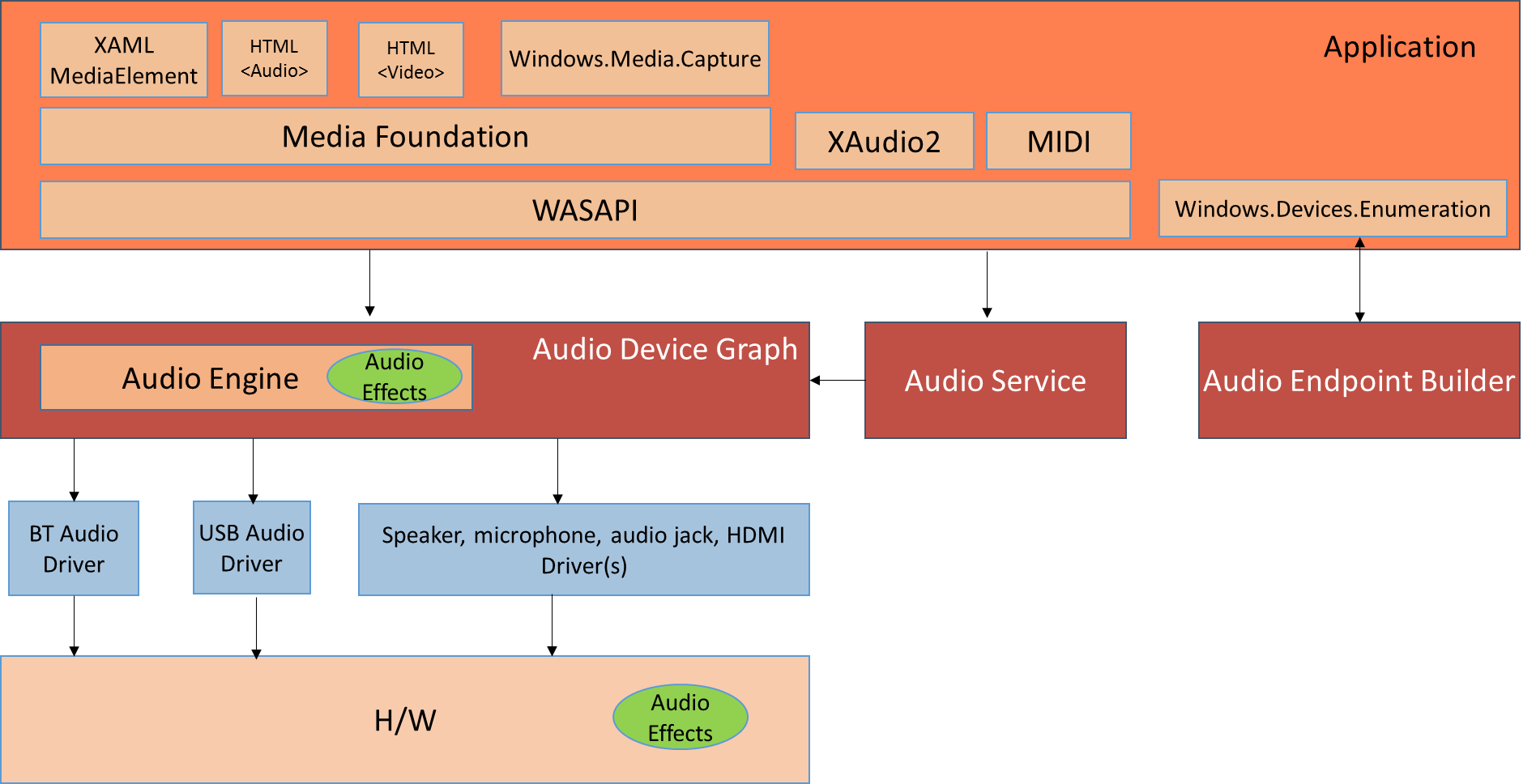Overview of the Windows 8.1 Audio Stack
As a Program Manager in the Audio team, one of my goals is to improve visibility into the Windows audio stack. As a result, I’ve decided to start a series of posts that provide a high-level overview of the Windows 8.1 audio stack. As time progresses, my goal is to enhance this information and go into more depth.
From a high level perspective, the audio stack has 6 main components:
APIs
High-level APIs:
Supported APIs:
XAML MediaElement (C#, VB, C++)
HTML <audio> and <video> tags (used by websites and Windows Web Apps)
Media Foundation (C++)
Windows.Media.Capture (C#, VB, C++)
Deprecated APIs:
-
Recommended:
For Streaming:
For Device Enumeration:
Not recommended for Windows applications:
MMDevice API (replaced by Windows.Devices.Enumeration)
Audio Device Graph (audiodg.exe), which loads the Audio Engine (audioeng.dll)
Corresponds to Android’s AudioFlinger
Mixes and processes audio streams
Loads “Audio Processing Objects” (APOs), which are H/W-specific plugins that process the audio signal. Android has a similar element called “audio effects”
Audio Service (audiosrv.dll)
Used to setup and control audio streams
Implements Windows policies for background audio playback, ducking, etc
Audio Endpoint Builder (audioendpointbuilder.exe)
- Used to discover new audio devices and create S/W audio endpoints
Audio drivers
They follow the port-miniport model (corresponds to the Advanced Linux Sound Architecture - ALSA)
Allow the audio stack to render and capture audio from several audio devices, including: integrated speakers and microphones, headsets/headphones, USB devices, Bluetooth devices, HDMI, etc
H/W
Audio codec
DSP (optionally)
Integrated speakers, microphone, etc
External devices: USB audio devices, Bluetooth audio devices, HDMI audio, etc
Signal processing can also be implemented in the H/W (e.g. the codec or the DSP), instead of or in addition to the APOs
The following diagram shows a graphical view of all the above items:
In the following blog posts I will dive deeper into each of the audio components that were described above.
Finally, I would like to thank Frank Yerrace and Kishore Kotteri from the Audio dev team for their contributions to this article.
